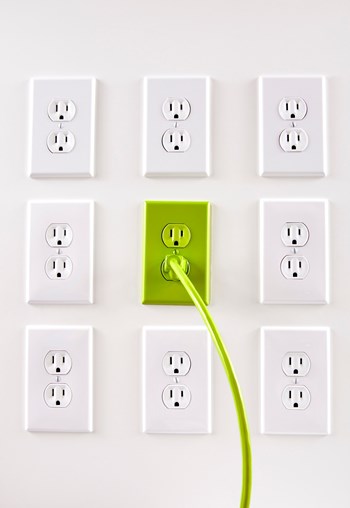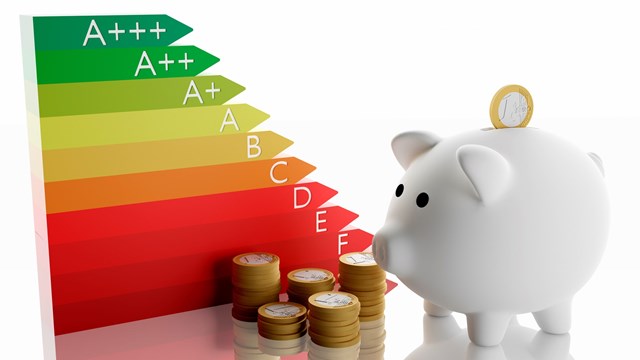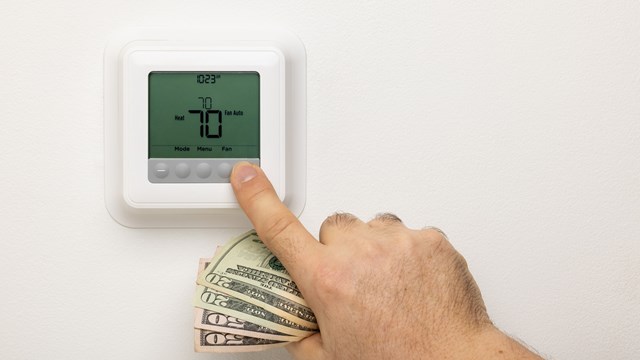
It’s difficult to imagine life without the appliances and technological perks to which we’ve become accustomed. But the scores of appliances found in a typical home create a huge demand for energy and costs for both the consumer and the environment can be significant. According to the New York State Energy Planning Board, New Yorkers spend more than $33 billion each year on energy–roughly $1,800 for every person living in the state. Becoming aware and integrating energy-saving appliances in your home can help defray the cost of modern conveniences, lowering your energy bills and helping to preserve the environment.
Heating and Cooling
Whether you have central air or individual window units, there are ways to conserve energy during the warmer months. For starters, consider how old your current method of keeping cool is. According to the Environmental Protection Agency (EPA)’s Energy Star guidelines, if you have a system that’s seven or more years old, updating your home with Energy Star-approved central air conditioners could save you as much as 20 percent on your summer electric bill. According to utility experts at Con Edison, the newest, most efficient A/C units can be up to 70 percent more efficient than older models. Look for units with the Energy Star label that incorporate features like built-in timers and thermostat settings to maximize your savings.
ConEd also recommends you make sure you’ve got the right size A/C unit for your room. While that larger A/C unit might seem like it will keep rooms colder, an air conditioner that’s too big is just wasteful. According to Carrier Corp., a manufacturer of air conditioning and heating equipment for commercial and residential use, you should take into account both the size of the room and the number of rooms you want to cool. For the maximum benefit, filters should be cleaned often–especially in areas like Manhattan, where heavier traffic and soot are present.
David Brooks, president of Superior Light + Fan in Manhattan, recommends installing ceiling fans to increase the effectiveness of air conditioning and heating. "Depending on the direction the fan is spinning, [clockwise or counter-clockwise] you can use less air conditioning in the summer and less heat in the winter," says Brooks. This works well in rooms with high ceilings. In the summer, the fan can be used to force cool air to a mid-range, and in the winter, it will help to bring warm air down, resulting in the use of less heat. A fan requires minimal energy when compared to an air conditioning unit, so installing one or two might be a wise investment. Keep in mind the number of rooms you have, as Brooks cautions, "Fans don’t work well around bends, doorways, or in an l-shaped room. You might need an additional fan depending on the space."
Lighting
"About 25 percent of your electricity use can probably be attributed to lighting," says Brooks. Aesthetically unappealing as it might seem, fluorescent lighting is not just for the office anymore. More and more people are switching to fluorescents in their homes as another way to cut back on energy waste and utility costs. According to Brooks, "Fluorescent lights are the most efficient. But most people tend to think they’re going to look horrible." This is a common misconception-in fact, there are a variety of energy-efficient fluorescent lighting products to choose from. "A residential fluorescent light gives off warm tones similar to an incandescent bulb," says Brooks. Two shades commonly found in the home are an old fashioned yellow shade (look for 2700K on the package) or a more modern, crisp-looking light (3000K/3500K). "In general, fluorescent lighting saves you three-quarters [the amount of energy used] over incandescent bulbs," says Brooks. They also last about ten times as long. Since fluorescent lighting also resonates less heat, you’ll need less air conditioning in the summer when your lights are on.
You might also consider changing fixtures, or installing control systems that use motion detectors and dimmer switches to conserve energy. If you absolutely refuse to make the switch to fluorescents, try using lower-wattage incandescents instead.
Major Appliances
Washing machines are a modern convenience that have become a modern necessity, despite being notorious energy- and water-wasters. A quick solution to reduce energy waste in older washing machines is to only wash full loads and to use warm or cold water when washing clothes–most of the energy required by washing machines is used to heat the water. Less heat means you’re using less energy. Setting the appropriate water level for your load size will help you avoid wasting water. Look for models that allow you to adjust load size and water level.
The Energy Star models are at least 50 percent more efficient than the minimum required by the government, using barely over half the water used by their predecessors. New washers also wring more water from your clothes, decreasing drying time and using less heat and electricity.
Clothes Dryers
Time was, you’d throw your clean, damp clothes in the dryer and then play a guessing game as to how long to leave them in. According to Con Edison, many of today’s dryers are equipped with sensors that know when the clothes are dry and shut off the dryer sooner, thus conserving energy. There are two types of sensors you can look for: The first–and more efficient–senses moisture inside the drum, saving 15 percent of the energy normally used. The second type detects moisture in the dryer exhaust and then shuts itself off, saving ten percent over the conventional, timed dryer.
You might also consider a gas dryer, which does the same job at about half the cost of an electric dryer.
Dishwashers
Energy Star dishwashers are at least 25 percent more efficient than non-approved models in terms of water use, with improved washing systems that do away with the need to pre-rinse dishes. They also use less energy to heat water, with Energy Star models at least 13 percent more efficient than the minimum government standard. If you have an old dishwasher in your kitchen, chances are you’re using about eight to 14 gallons of water to do a load of dishes. A newer model could wash the same load of dishes using only seven to ten gallons of water, and there are even counter-top models that work without electricity by connecting directly to your faucet.
Regardless of the age and model of your washer, never run it without a full load inside, and consider using the fan-drying cycle instead of the heat-drying method to save on energy as well.
Ovens
Ovens have come a long way since the days of hot-plates propped on wood-burning stoves. Today, more insulation and tighter-fitting door gaskets have made ovens more efficient than ever before. If you’re using a gas oven, an electronic, pilotless ignition reduces gas usage by about 30 percent without a perpetually burning pilot light. A gas oven equipped with this technology will cost less than half of what an electric oven costs to use.
For electric stoves, look for halogen elements and induction elements rather than one with an electric coil. You’ll have to use only iron or steel pots and pans–no copper or aluminum–but these types of stoves are more efficient.
Refrigerators
Today’s refrigerators generally exceed the minimum federal government standards by about ten percent. According to ConEd, your refrigerator is likely the biggest energy drain of all your major appliances. Depending on the age and model residing in your kitchen, anywhere from 15 to 50 percent of your monthly electric bill can be attributed to the refrigerator.
There are a couple of ways to ameliorate this power-sucking situation: side-by-side models are less energy-efficient than refrigerators with the freezer on top–the latter use seven to 13 percent less energy than the former. And for all their convenience, those automatic icemakers drive your bill up another 12 to 14 percent, on top of increasing the unit’s original purchase price. When purchasing any appliance-especially a refrigerator-check the Energy Guide label on the unit, which estimates the appliance’s annual energy use.
Conservation Incentives for Owners
Of course, all the energy-efficient products in the world won’t do much good if people don’t know about them. In an effort to raise consumer awareness of energy-saving product innovations, a number of government agencies have launched educational campaigns to get the word out.
Davidson also encourages co-op and condo owners to share in the cost of an energy audit. "The energy audit is the key to everything else," says Davidson. "In the energy audit we establish a base line to find out where energy is lost." An audit examines how much energy is used for lighting, heating, cooling, and insulating a given building. Using the audit results, owners can determine which appliances should be updated or replaced to conserve energy. NYSERDA typically pays about 50 percent of the cost of the audit once an owner decides to follow-through, replacing older energy wasters. Through NYSERDA, there are several programs, such as low-interest loans, to lower the cost of appliance replacement for the owner.
If you’re hesitant to make the move to newer, more energy-conscious appliances, consider the benefits: replacing and updating old appliances will save energy-and money–in the long run, along with preserving the environment and improving the quality of life, particularly in densely-populated metropolitan areas. Says Davidson, "The energy standards have gone up, so you’re looking at much more savings over an older model." Indeed, your initial investment in energy innovation will pay for itself many times over, both financially and in peace of mind.
Ms. Mannino is a freelance writer living in Montclair, New Jersey.






Leave a Comment